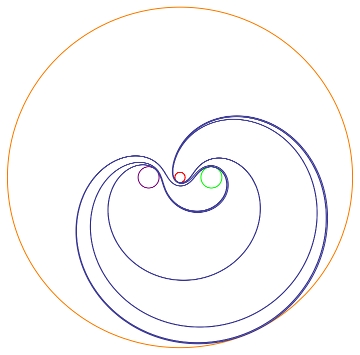
Special Year on Geometric Structures on 3-Manifolds


During the 2015-16 academic year, the School of Mathematics conducted a special program on Geometric Structures on 3-Manifolds. The program was led by Distinguished Visiting Professor Ian Agol of the University of California at Berkeley. The theme of the program was classication of geometric structures on 3-manifolds. Twenty members took part in the program. Senior members included David Gabai, Princeton University; Jeremy Kahn of CUNY Graduate Center; Danny Calegari, University of Chicago; John Etnyre, Georgia Insitute of Technology; Vladimir Markovic, Caltech; Nathan Duneld, University of Ilinois at Urbana-Champaign; and Maryam Mirzakhani, Stanford.
1. Background and Motivation
Thurston proposed the classication of geometric structures on n-manifolds. While the spectacular Geometrization Theorem classied the geometric structures on 3-manifolds with compact isotropy group, i.e. locally homogeneous Riemannian metrics, there are many other interesting structures to investigate such as contact structures and foliations. The goal of the program was to investigate these geometric structures and relations between them. Other topics of interest related to geometric structures are pronite completions of 3-manifold groups, orderings of fundamental groups, mapping class groups of surfaces, gauge theory, PD(3) groups, minimal surfaces, cube complexes, and strengthened structures such as taut foliations, tight contact structures, pA ows, and quasi-geodesic foliations. Many of these structures do not even have a conjectural classication (in terms of topological restrictions and moduli), and specic examples are still being constructed.
2. Program highlights
There were weekly seminars for the special program, given by visitors and some members. In addition, there were two workshops. There were about 20 visitors associated with the special program over the course of the year, not including workshop participants. Members also participated in weekly \mathematical discussions”, and there was a reading seminar on gauge theory.
Some results from the program included:
- The construction of “ubiquitous” closed quasi-fuchsian surfaces in cusped hyperbolic 3-manifolds by two groups: Cooper and Futer making use of techniques of Baker and Cooper; and Kahn and Wright (note: Wright was a member of the School of Mathematics in the fall, but not associated with the special program). This answered a question of Agol as to whether one could cubulate cusped hyperbolic manifolds so that the cusp subgroups act elliptically.
- Stephen Frankel proved that quasi-geodesic flows may be deformed to pseudo-Anosov flows, answering a conjecture of Danny Calegari.
- Barthelme (a short-term visitor), Fenley, and Frankel proved a rigidity result for hyperbolic automorphisms of 3-manifolds: these are conjugate to time-one maps of Anosov flows.
- Joel Hass proved the existence of many hyperbolic 3-manifolds which fiber over the circle but cannot be foliated by minimal surfaces, addressing a long-standing open question of Uhlenbeck (another member of the School for the year not associated with the special program).
- Nathan Duneld defined a class of triangulations of 3-manifolds (Δ-complexes plus some extra conditions called a laminar orientation ) which imply the existence of a taut foliation. He then used this criterion to compute thousands more examples of manifolds which are not L-spaces and admit a taut foliation, bolstering a conjectured equivalence.
- Balasz Strenner (in joint work with Margalit and Yurrtas) showed that there is a polynomial-time solution to the conjugacy problem in mapping class groups of a fixed surface.
In the spring, a reading group on gauge theory organized by Tye Lidman focussed on understanding Kronheimer and Mrowka’s preprint “Tait colorings, and an instanton homology for webs and foams”, which defined a new Floer homology invariant of certain 3-dimensional orbifolds (Kronheimer and Mrowka kicked off the 3-manifold seminar in the fall with back-to-back talks on this work). Participants included people from Princeton University, and talks were given by Ian Agol, Tye Lidman, Steven Sivek, Karen Uhlenbeck, Lucas Culler, and Cagatay Kutluhan.
In general, there were many interactions between the members associated with the special program and the other members, as well as academics from local universities including Princeton, Rutgers, and Temple.
3. Workshops
Two special program workshops were held during term I. The first workshop, “Geometric structures on 3-manifolds”, took place during the week of October 5, 2015. The goal of the October workshop was to explore the topology of hyperbolic 3-manifolds.
The second workshop on “Flows, foliations and contact structures” was held during the week of December 7-11, 2015. This workshop encouraged interaction between people studying gauge theory, contact structures, foliations, and related topics such as symplectic topology.